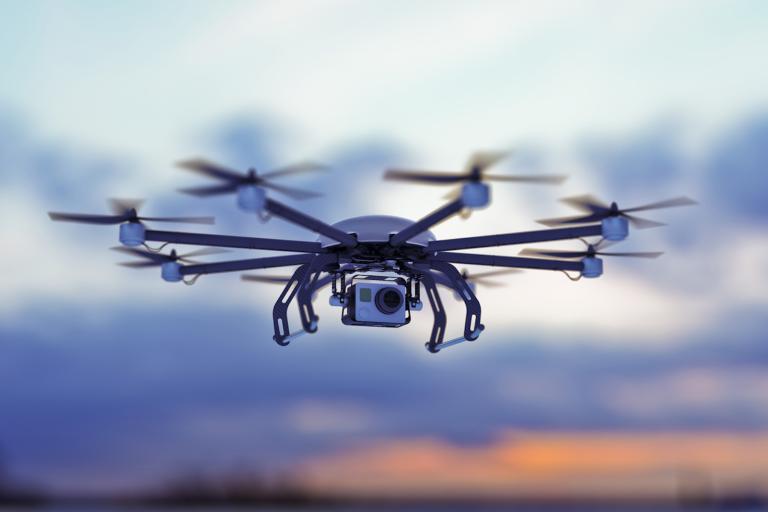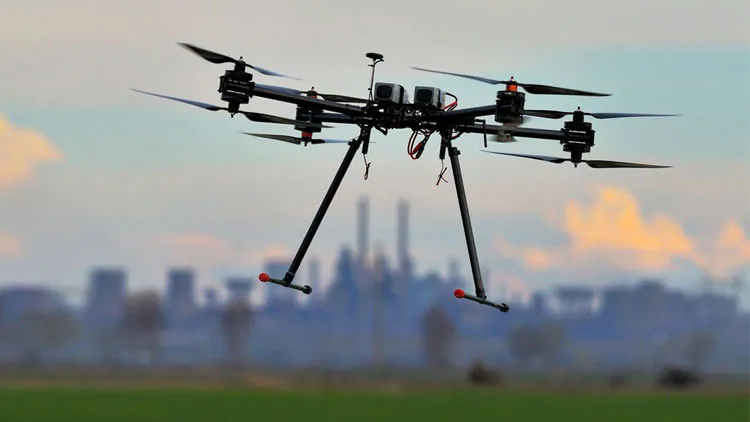
Welcome, fellow sky enthusiasts! Whether you’re a drone enthusiast or just fascinated by the idea of navigating the skies with uncrewed aircraft, this blog post is your ultimate guide to understanding drone flight regulations and laws.
In an era where drones are becoming increasingly popular for recreational and commercial purposes, knowing the dos and don’ts when taking flight is crucial.
So buckle up as we delve into the world of drones, uncloak their legal complexities, and equip ourselves with all the knowledge needed to soar through the skies safely and responsibly.
Prepare for a captivating journey that will leave you flying high in no time!
What is a Drone?
A drone is an uncrewed aircraft that can be controlled remotely by a pilot or an onboard computer. Drones are used for various purposes, including surveillance, photography, and mapping.
Drones are becoming increasingly popular as they become more affordable and easy to use. However, several regulations and laws govern the use of drones. It is essential to understand these regulations before operating a drone.
The Federal Aviation Administration (FAA) is the primary regulator of drones in the United States. The FAA has established a set of rules known as the Small Unmanned Aircraft Regulations (Part 107), which apply to drones weighing less than 55 pounds.
Under Part 107, drones must be registered with the FAA and operated by certain restrictions, such as staying within the visual line of sight of the pilot and not flying over people. Pilots must also obtain a special certificate from the FAA to operate a drone commercially.
In addition to the FAA regulations, there may also be state or local laws that apply to drone operations. For example, some states have enacted laws prohibiting using drones for hunting or other trespassing activities. It is essential to check with your local authorities before operating a drone in any jurisdiction.
Understanding the Regulations and Laws Governing Drone Flights
Assuming you are based in the United States, you should be aware of a few general regulations and laws before operating a drone.
First, the Federal Aviation Administration (FAA) requires anyone flying a drone to register their drone with the FAA for commercial purposes.
You must be at least 13 years old to write, and once registered, you will be given a unique identification number that must be displayed on your drone.
Second, you must follow all of the FAA’s safety guidelines which include not flying your drone:
– Higher than 400 feet
– Near airports or helipads
– In restricted airspace
– Over crowds of people
– At night, without proper lighting
Third, you are only allowed to fly one drone at a time and must keep it within your visual line of sight at all times. This means you cannot wash your drone using first-person view (FPV) goggles as they prevent you from seeing the drone itself.
Fourth, you must yield the right of way to human-crewed aircraft and give them plenty of space – at least 3 miles if they fly faster than 100mph. If an airport is nearby, check their NOTAM (notice to airmen) before flying to see if any temporary flight restrictions are in place.
These are just some of the basic regulations and laws governing drones in the United States – be sure to research more thoroughly before operating a drone, as ignorance is not an excuse for the law.
Types of Drones and Their Use Cases
A variety of drone types are available on the market, each with its own capabilities and features. When deciding which type of drone to purchase, it’s essential to consider what you’ll be using it for. Here are some of the most popular types of drones and their use cases:
1. Quadcopters: Quadcopters are the most common type of drone and are ideal for photography and videography purposes. They typically have four rotors and are relatively easy to fly.
2. Fixed-Wing Drones: Fixed-wing drones are designed for longer flight times and higher speeds. They’re often used for surveying or mapping purposes.
3. Hybrid Drones: Hybrid drones combine the best features of both quadcopters and fixed-wing drones. They’re perfect for long-range photography or videography projects.
4. Multi-Rotor Drones: Multi-rotor drones typically have six or more rotors and can be used for various purposes, including photography, videography, mapping, and search-and-rescue missions.
Permission Required to Fly a Drone
To fly a drone, you must obtain a Federal Aviation Administration (FAA) permit. There are three types of tickets: a recreational license, a commercial permit, and a general permit. Each type of permit has different requirements.
To obtain a recreational permit, you must be at least 16 years old and have a valid U.S. driver’s license. You must also register your drone with the FAA. To obtain a commercial permit, you must be at least 18 and have a valid pilot’s license.
You must also pass a written exam and register your drone with the FAA. To obtain a general permit, you must be at least 21 years old and have a valid pilot’s license. You must also pass a written exam and register your drone with the FAA.
How To Avoid Conflict with Air Traffic Control
Air traffic control is responsible for aircraft safety in the skies, and they take their job very seriously. There are a few things that you can do to avoid conflict with them:
1. Know where you are allowed to fly. Many areas are off-limits to drones, such as near airports or military bases. Familiarize yourself with the rules before you take off.
2. Don’t fly near other aircraft. This is a surefire way to get the attention of air traffic control, and it’s not safe for either party involved. If you must fly near other aircraft, keep your distance and always be aware of their flight path.
3. Follow the rules of good flying etiquette. This includes not flying above 400 feet, maintaining a line of sight with your drone at all times, and not flying in inclement weather conditions.
4. Be respectful when communicating with air traffic control. They are there to help keep everyone safe, so listen to their instructions and follow them to the best of your ability.
Registering Your Drone with the Federal Aviation Administration (FAA)
As of December 21, 2015, the Federal Aviation Administration (FAA) requires that all drones weighing more than 0.55 pounds (250 grams) and less than 55 pounds (25 kilograms) be registered with the agency. Drones outside these weight parameters do not need to be registered.
The registration process is simple and can be completed online in just a few minutes. You will need to provide your name, address, and email address and create a username and password for your account. Once registered, you will be given a unique registration number that must be affixed to your drone in a visible location.
There is a $5 fee to register your drone, which is valid for three years. You must renew your registration every three years to keep flying legally.
So why register your drone? The main reason is safety. Having all drones registered with the FAA, they can easily track who is operating them and where they are flying. This helps to ensure that drones are being used safely and within the bounds of the law.
It should be noted that registering your drone does not make you immune from possible fines or penalties if you operate it illegally. The FAA can still issue fines of up to $27,500 for unsafe or reckless flying, even if your drone is registered correctly. So always check local laws and regulations before taking to the skies!
Keeping Up With Changes in Regulations
As the popularity of drones continues to grow, so do the regulations and laws governing their use. Keeping up with these changes can be difficult, but ensuring that you are operating your drone within the legal bounds set by your country or state is essential.
There are a few key things to keep in mind when flying your drone:
• Make sure you are aware of the airspace restrictions in your area. In many countries, drones cannot fly in certain areas, such as near airports or densely populated areas. Familiarize yourself with the map of restricted airspace before flying.
• Be aware of the maximum altitude that drones are allowed to fly in your area. In most cases, drones cannot pass over 400 feet (120 meters).
• Keep your drone within sight at all times. This means that you should not fly your drone out of range of where you can see it with your own eyes. If you lose sight of your drone, you could lose control of it and cause an accident.
• Do not fly your drone over people or animals. Drones can cause serious injury if they fall on someone, so it’s important to avoid washing them over areas with people or animals below.
Following these simple guidelines ensures that you are operating your drone safely and within the law.
Conclusion
With the rise of commercial drones, understanding drone flight regulations and laws is becoming increasingly important for anyone wanting to operate a drone.
By following the guidelines outlined in this article, you should better understand how to stay within legal boundaries and enjoy your hobby or business without fear of getting into trouble with the law.
Remember that safety always comes first, so do your due diligence before taking off with your drone!








